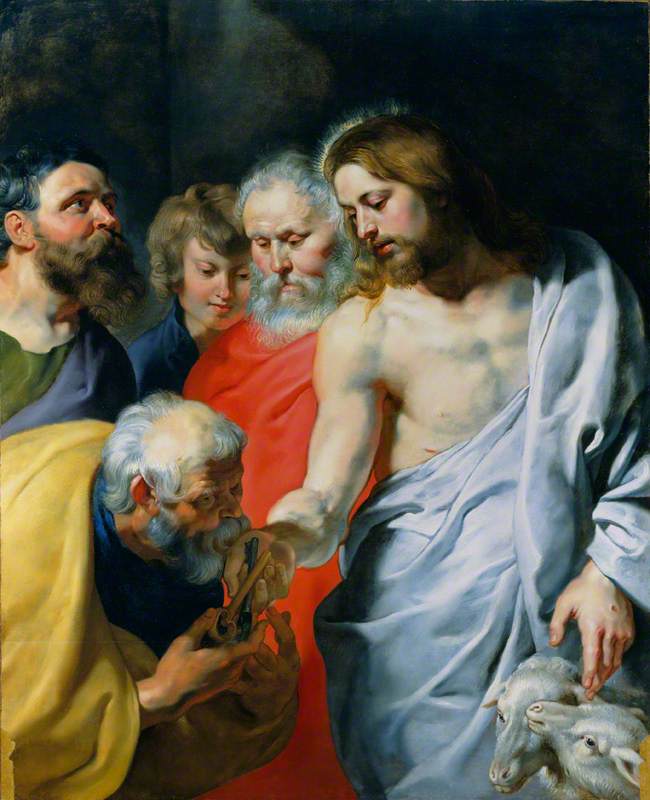The word “unthinkable” is an amusing expression, an oxymoron wrapped in a single word. Nevertheless, it points us towards some very unpleasant things we are forced to think about, such as nuclear war or a Church in crisis.
Until very recently, the prospect of a pope promulgating significant doctrinal error was unthinkable. But many of us are now fretting about ambiguous papal pronouncements said to be “authentic magisterium” that directly oppose Scripture and Tradition.
It is always helpful to remember that a pope does not create doctrines; he elucidates doctrines to conserve the Faith he has received. The Fathers of the First Vatican Council defined the teaching authority of the pope. But they link his authority to Scripture and Tradition, the Church’s entire doctrinal history:
The Roman pontiffs . . . sometimes by summoning ecumenical councils or consulting the opinion of the Churches scattered throughout the world, sometimes by special synods, sometimes by taking advantage of other useful means afforded by divine providence, defined as doctrines to be held those things which, by God’s help, they knew to be in keeping with Sacred Scripture and the apostolic traditions. (Vatican I, Chapter 4, emphasis added.)
The Fathers of the Second Vatican Council Fathers likewise link the authentic magisterium to Tradition and Scripture:
But when either the Roman Pontiff or the Body of Bishops together with him defines a judgment, they pronounce it in accordance with Revelation itself, which all are obliged to abide by and be in conformity with, that is, the Revelation which as written or orally handed down is transmitted in its entirety through the legitimate succession of bishops and especially in care of the Roman Pontiff himself, and which under the guiding light of the Spirit of truth is religiously preserved and faithfully expounded in the Church. (Vatican II, LG 25, emphasis added.)
For example, the infallible teachings about Mary’s Immaculate Conception and Assumption emerged from unsettled Catholic theology. But the deeper understanding could be explained in light of Tradition and in relationship with the rest of Catholic doctrines and dogmas.
On sexual matters, the Church’s constant teachings in her ordinary magisterium on the nature and goods of marriage – and intrinsic sexual disorders such as contraceptive acts and homosexual behavior – are well-defined infallible teachings of the Church rooted in Scripture and Tradition. These clear doctrines not only provide precise moral guidance but opportunities for fruitful theological reflection bringing even greater clarity.
The Council Fathers carefully defined the authority of bishops – and assumed their fidelity and goodwill in conserving and faithfully teaching Catholic truth. But the Fathers surely knew the many ways that unfaithful bishops betray their office, usually by neglect but sometimes by flawed teachings.

The Fathers apparently did not see the need to state the obvious: doctrinal violations of Church teaching by bishops cannot bind the faithful in conscience. It is at least conceivable that a pope might also reject and abuse the graces of his office in a similar way. Such errors may muddy the waters of the ordinary magisterium, but obviously cannot bind in conscience.
Of course, deliberate ambiguities in papal teaching, incompetence, and infidelity that tamper with the “authentic magisterium” would be disastrous: sowing confusion and even suggesting the unthinkable, that the gates of Hell have prevailed in the Church.
But this cannot be the case as a matter of logic. The truth of Christ remains. His Gospel is handed down in Scripture, Tradition – and the cumulative magisterial teaching of popes, bishops, councils, and synods throughout history.
Grace perfects nature and the pope’s teaching authority is not magic. Every presumed magisterial thought that a pope eventually decrees must always be judged against Scripture and Tradition. Even conciliar pronouncements, including the pronouncements of Vatican II, must also be aligned with Scripture and Tradition.
Does this imply a “pick and choose” magisterium? No. The interlocking strength of Scripture and Tradition, and the authentic magisterium throughout history, ensure that the truth of Christ will not be circumvented by innovations. Sometimes corrections need to be made – as Paul corrected Peter at Antioch. (cf. Galatians 2:11-21)
Hence, bishops (supported by orthodox theologians) must recognize their obligation to respond to papal pronouncements that are dangerously ambiguous or contradict Scripture and Tradition. They need to do so respectfully but firmly and without fear, both because – under the guidance of the Holy Spirit – they have solemnly promised to do so by their oaths of office and because they have the historical content of Revelation on their side.
Corrections may also come from the faithful who are, after all, endowed with the sensus fidei (sense of the faith). But the elimination of doctrinal distortions and errors (and restoration of doctrinal clarity) is difficult. As widespread clerical dissent from Humanae Vitae demonstrates, doctrinal repair and restoration can lead to generations of painful conflict.
Unfortunately, like the prospect of nuclear war, the thought of significant papal doctrinal missteps is no longer unthinkable. But we should be confident that doctrinal error and schism can be avoided, with God’s grace, by a careful and insistent logic that protects the integrity of the Faith: Authentic papal magisterial authority cannot be in opposition to the doctrinal history of the Church.
People, priests, and bishops need not shrink from the obligation to defend the Faith. We should consider it a privilege: “Since we have the same spirit of faith as he had who wrote, ‘I believed, and so I spoke,’ we too believe, and so we speak.” (2 Cor. 4:13)
*Image: Christ’s Charge to Peter by Peter Paul Rubens, 1616 [Wallace Collection, London]














